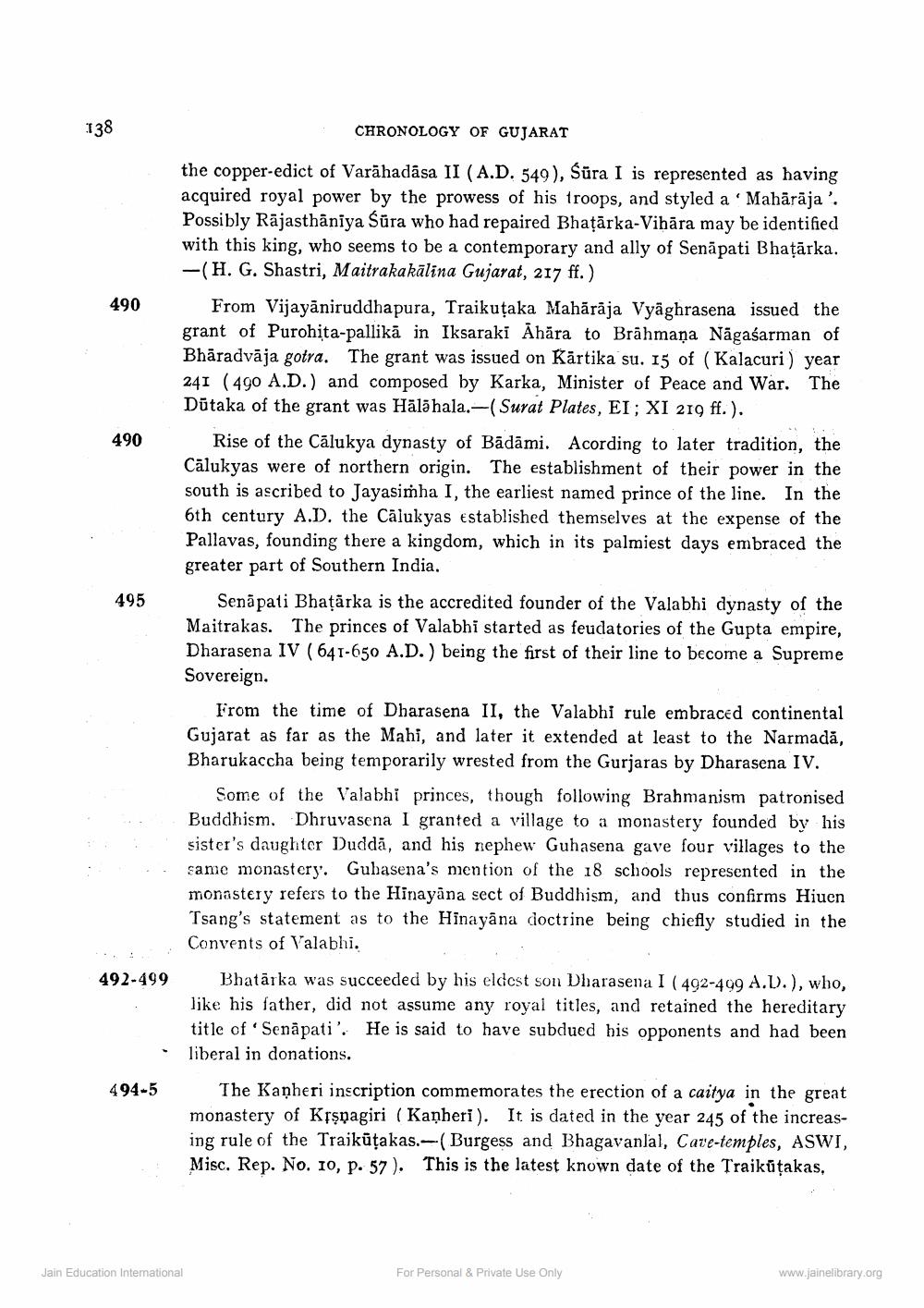________________
138
CHRONOLOGY OF GUJARAT
490
the copper-edict of Varāhadása II (A.D. 549), Śūra I is represented as having acquired royal power by the prowess of his troops, and styled a Mahārāja'. Possibly Rājasthāniya Śūra who had repaired Bhațārka-Vihāra may be identified with this king, who seems to be a contemporary and ally of Senāpati Bhațārka.
-(H. G. Shastri, Maitrakakālina Gujarat, 217 ff.) 490 From Vijayāniruddhapura, Traikutaka Mahārāja Vyāghrasena issued the
grant of Purohita-pallikā in Iksaraki Ahāra to Brāhmaṇa Nāgaśarman of Bhāradvāja gotra. The grant was issued on Kārtika su. 15 of (Kalacuri) year 241 (490 A.D.) and composed by Karka, Minister of Peace and War. The Dūtaka of the grant was Hālāhala.-(Surat Plates, EI; XI 219 ff.).
Rise of the Cālukya dynasty of Bādāmi. Acording to later tradition, the Cālukyas were of northern origin. The establishment of their power in the south is ascribed to Jayasimha I, the earliest named prince of the line. In the 6th century A.D. the Cālukyas established themselves at the expense of the Pallavas, founding there a kingdom, which in its palmiest days embraced the
greater part of Southern India. 495 Senā pati Bhatarka is the accredited founder of the Valabhi dynasty of the
Maitrakas. The princes of Valabhi started as feudatories of the Gupta empire, Dharasena IV (641-650 A.D.) being the first of their line to become a Supreme Sovereign.
From the time of Dharasena II, the Valabhi rule embraced continental Gujarat as far as the Mahi, and later it extended at least to the Narmadă, Bharukaccha being temporarily wrested from the Gurjaras by Dharasena IV.
Some of the Valabhi princes, though following Brahmanism patronised Buddhism. Dhruvascna I granted a village to a monastery founded by his sister's daughter Duddā, and his nephew Guhasena gave four villages to the same monastery. Guhasena's mention of the 18 schools represented in the monastery refers to the Hinayāna sect of Buddhism, and thus confirms Hiuen Tsang's statement as to the Hinayāna doctrine being chiefly studied in the
Convents of Valabhi. 492-499 Bhatāska was succeeded by his eldest son Dharasena I (492-499 A.D.), who,
like his father, did not assume any royal titles, and retained the hereditary title of Senapati'. He is said to have subdued his opponents and had been
liberal in donations. 494-5 The Kaņheri inscription commemorates the erection of a caitya in the great
monastery of Krşpagiri ( Kanheri). It is dated in the year 245 of the increasing rule of the Traikūțakas.-(Burgess and Bhagavanlal, Care-temples, ASWI, Misc. Rep. No. 10, p. 57). This is the latest known date of the Traikutakas,
Jain Education International
For Personal & Private Use Only
www.jainelibrary.org




